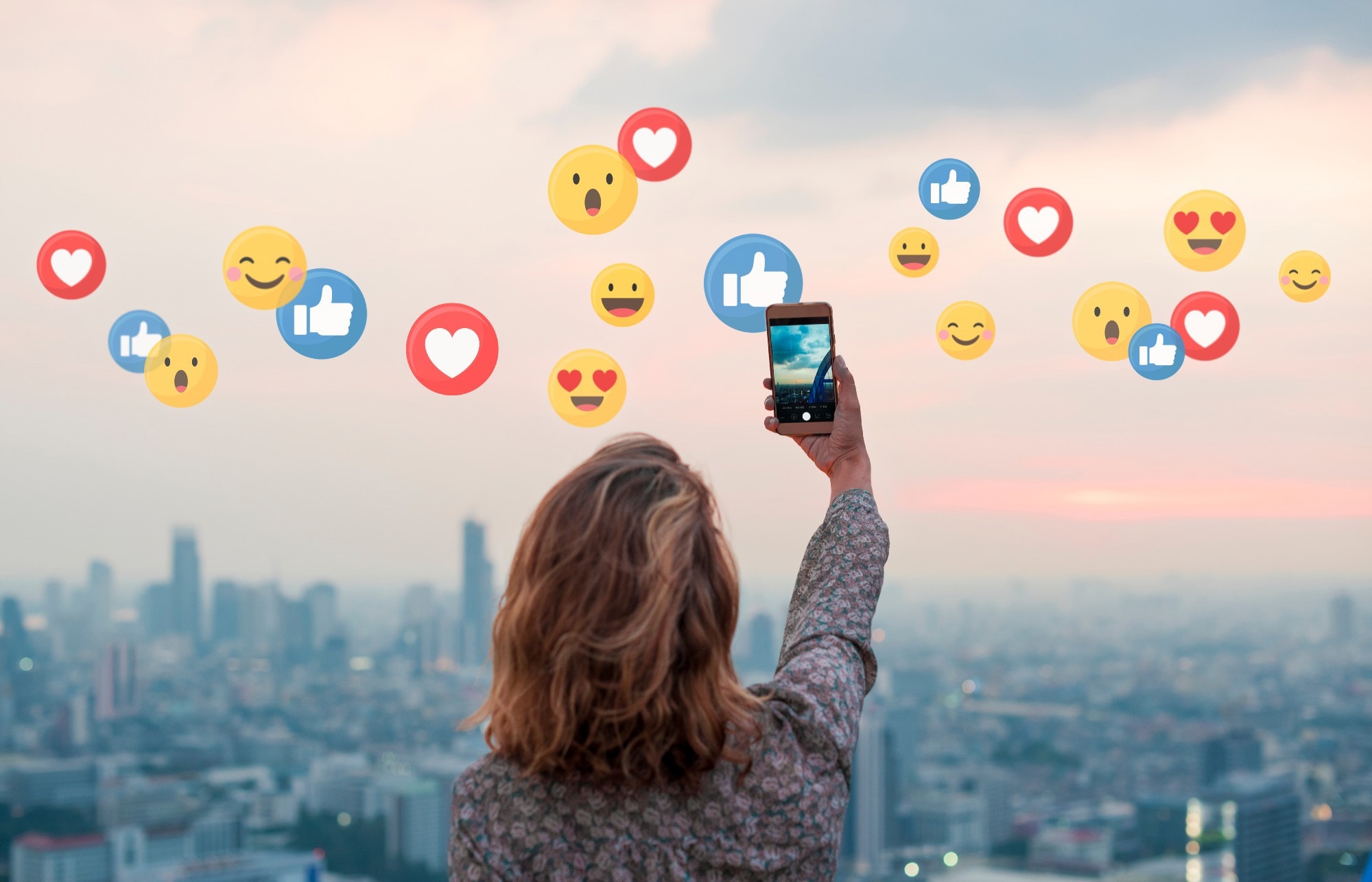Although the topic of friendship has been researched extensively, no studies to date have used brain imaging technology to distinguish between fake friendships of influencers and other celebrities.
In a recent Brain Sciences study, scientists examined brain activities induced by names of followed and loved influencers and other celebrities and compared them with the brain activities elicited by names of real-life loved friends and relatives.
 Study: Brain Activities Show There Is Nothing Like a Real Friend in Contrast to Influencers and Other Celebrities. Image Credit: Rawpixel.com / Shutterstock.com
Study: Brain Activities Show There Is Nothing Like a Real Friend in Contrast to Influencers and Other Celebrities. Image Credit: Rawpixel.com / Shutterstock.com
Background
The first social networking platform, Classmates.com, was developed in 1995, followed by Sixdegrees.com in 1997. Although these platforms were designed to connect with other people, instant messaging was not introduced until the early 2000s. Over the years, these platforms were improved and made smartphone-friendly to allow users to stay connected with others, even those living in other parts of the world.
Initially, the term “social media” described the concept of staying connected, communicating with people online, or sharing information instantly, irrespective of location. However, despite the anticipated benefits of social media, several negative consequences associated with its use have been identified.
In 2021, several studies reported that the misuse of social media causes behavioral addiction symptoms, which subsequently leads to a lack of time for healthier or more useful activities. However, to date, there remains a lack of studies that have analyzed issues related to the concept of fake or virtual friends.
The concept of friendship includes some characteristic features, such as a relationship between individuals, a private relationship, and the willingness of individuals to share their true character or personality. Comparatively, fake friendships are induced by bloggers, influencers, YouTubers, and others who are not interested in reciprocal friendships but try to establish closeness and trust amongst their followers.
Although a young social media consumer supports an influencer by being loyal and feeling close to them, influencers are only interested in influencing without any attachment to their followers. Moreover, these influencers are often only focused on financial gains and are not seeking any true friendship.
Influencers use platforms such as Instagram, Facebook, Snapchat, YouTube, and Twitter for financial gain through presenting sponsored products. As a result, many influencers become extremely well-known celebrities, particularly among young social media consumers who follow them every day. In fact, most social media consumers have demonstrated strong feelings of genuine friendship and trust for these influencers.
About the study
Electroencephalography (EEG), which is an analytical technique used to obtain brain images, was used to examine brain activities induced by names of selected influencers followed by the individual. Subsequently, these brain images were compared with the brain activities elicited by names of real-life loved friends and relatives.
A total of 30 participants were recruited for this study and were invited to visit the Freud Cognitive and Affective Neuroscience and Behavior Lab (Freud CanBeLab).
All participants provided name lists belonging to fake, real, and no friends. The fake friend group included 20 names of the most followed and loved influencers or other celebrities, while the real friend group included another set of 20 names of real friends and relatives. The no-friend group comprised 20 names of individuals for whom they did not feel any closeness.
Two participants were excluded from the study due to measurement artifacts. Therefore, 28 participants, 18 of whom were male and 10 female, were shown selected names in a random sequence, and their brain activities were recorded through EEG. Imaging data were used to calculate event-related potentials (ERPs).
Study findings
The mean age of the participants was 21.93 years, and none had any neuropathological history. In the study cohort, sixteen participants reported between one and two hours of social media consumption each day, while seven participants reported two to three hours of each day consumption, and five reported daily social media consumption exceeding three hours.
Interestingly, familiarity was observed between fake and real friends. The name of a close person triggered similar brain simulations to one’s own name; however, signals induced from a famous name and an unknown name differed significantly.
A short effect was observed in the left frontotemporal region starting at about 250 milliseconds (ms) post-stimulus to process real and no friend names; however, both ERPs varied from those induced by fake friend names. Subsequently, a longer effect of about 400 ms was generated in the left and right frontal.
Although temporoparietal ERPs differed between fake and real friend names, no friend names elicited similar brain activities to fake friend names in those regions in the later processing stage. Typically, real friend names triggered most negative brain potentials, which were interpreted through the highest brain activation levels.
Conclusions
The current study provided empirical evidence that the human brain can distinguish between a followed influencer or celebrities (unilateral friendship) and a real-life loved person (reciprocal friendship).
Journal reference:
- Walla, P., Kulzer, D., Leeb, A., et al. (2023) Brain Activities Show There Is Nothing Like a Real Friend in Contrast to Influencers and Other Celebrities. Brain Sciences. 13(5); 831. doi:10.3390/brainsci13050831